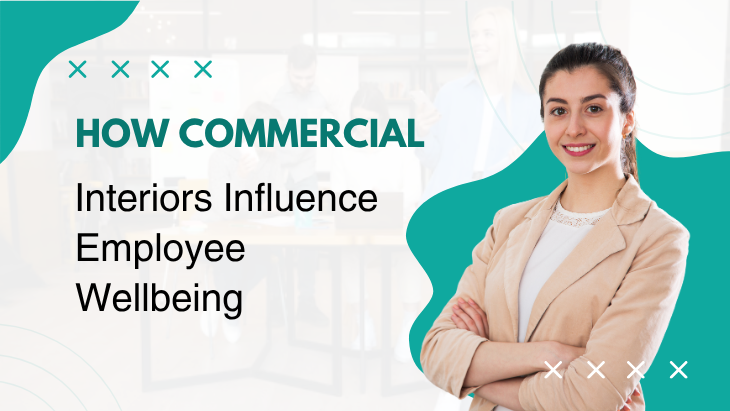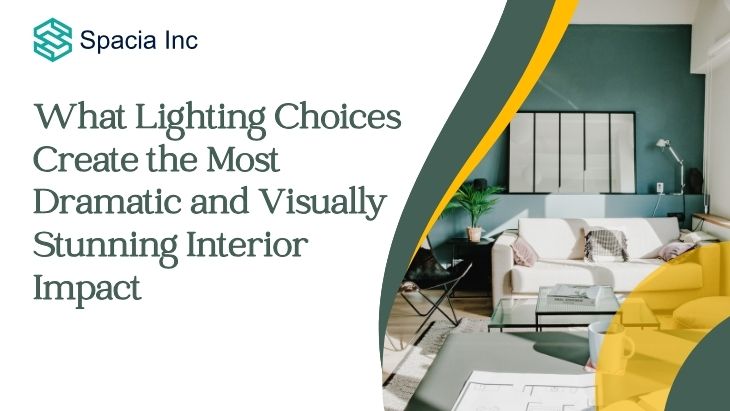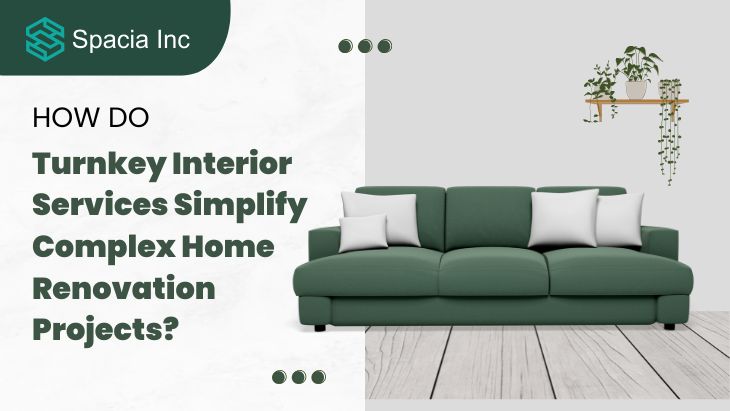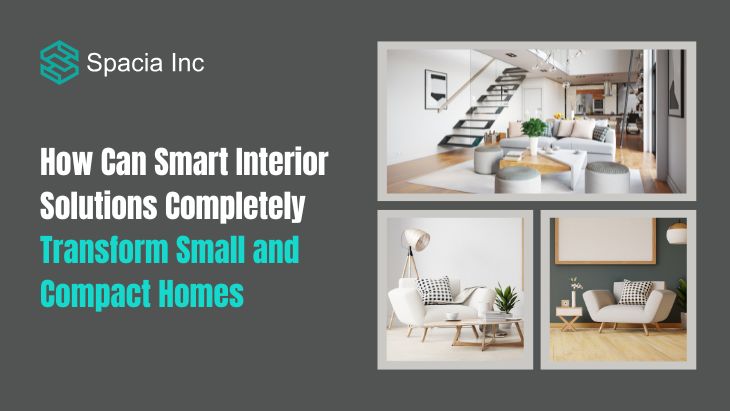The modern workspace is no longer just about desks, chairs, and computers. In today’s competitive corporate environment, commercial interiors play a critical role in employee satisfaction, engagement, and overall well-being. Research shows that thoughtfully designed workplaces can directly impact mental health, physical comfort, and productivity levels. As more businesses aim to attract and retain top talent, attention is shifting toward creating healthier and more inspiring office environments.
This is where Interior Design & Turnkey Solutions come into play. These comprehensive services go beyond aesthetics to incorporate function, comfort, and wellness into every element of commercial interior planning. Whether you're setting up a new office or rethinking an outdated space, a strategic approach to interior design can make a significant difference in how your employees feel and perform.
Let’s explore the many facets of commercial interiors that influence employee well-being.
The Psychology Behind Interior Design
Environmental Psychology in the Workplace
Environmental psychology examines how our surroundings influence our thoughts, feelings, and behaviors. In an office setting, poor lighting, lack of privacy, or uninspiring colors can cause stress, fatigue, and decreased motivation. Conversely, well-planned environments with the right sensory stimuli promote calmness, creativity, and focus.
The Role of Biophilic Design
Biophilic design integrates natural elements like plants, water features, and organic shapes into the workspace. This approach has been shown to reduce stress, enhance mood, and improve cognitive function. Whether it’s a wall of greenery or wooden finishes that mimic nature, biophilic elements can significantly boost mental health.
Lighting and Its Impact on Mood
Natural Light vs. Artificial Light
Natural light is essential for regulating the body’s internal clock. Offices that maximize daylight exposure often see reduced absenteeism and improved employee morale. While artificial light is necessary, it should be balanced and mimic daylight as closely as possible to avoid eye strain and fatigue.
Circadian Rhythm and Productivity
Exposure to natural light helps regulate circadian rhythms, which govern sleep-wake cycles. When employees’ biological clocks are in sync, they sleep better and perform more effectively during the day. Poor lighting disrupts this rhythm, leading to sluggishness and irritability.
Light Colour Temperature and Its Effects
Cool white light (4000–5000K) is ideal for productivity zones, while warmer light (2700–3000K) suits breakout areas where relaxation is encouraged. Adjustable lighting options empower employees to create a personalised and comfortable environment.
Ergonomics and Physical Health
1. Importance of Ergonomic Furniture
Ergonomic furniture supports the body’s natural posture, reducing the risk of musculoskeletal disorders. Adjustable chairs, lumbar support, and proper desk height can minimize back pain, shoulder stiffness, and wrist strain.
2. Sitting vs. Standing Desks
Alternating between sitting and standing throughout the day improves circulation, reduces fatigue, and keeps employees energised. Sit-stand desks give individuals the flexibility to choose what works best for them.
3. Common Physical Issues from Poor Design
Neck pain, carpal tunnel syndrome, and eye strain are common complaints in poorly designed offices. Investing in ergonomic layouts is a proactive way to promote physical well-being and reduce healthcare costs.
Colour Psychology in Office Interiors
1. Calming Colors vs. Stimulating Colors
Colours have a profound impact on mood. Soft blues and greens promote calmness and clarity, while bold reds and oranges can increase alertness and energy. Designers must strike a balance based on the function of each area.
2. How Colour Affects Focus and Creativity
Creative departments might benefit from vibrant and diverse colour palettes, while accounting or legal teams may perform better in muted, focused environments. Customising colour schemes to department needs ensures optimal results.
Space Planning and Flow
1. Open Plan vs. Closed Offices
Open-plan offices encourage collaboration but can also lead to distractions. Enclosed offices offer privacy but may inhibit team interaction. The best solution often lies in a hybrid approach.
2. Movement and Circulation
Poor circulation pathways can lead to congestion and hinder productivity. Clear, wide walkways and logical zoning help employees move freely, reducing stress and saving time.
3. Personal Space and Privacy
Employees need areas where they can concentrate without interruption. Quiet zones, phone booths, and personal workstations help maintain boundaries and improve focus.
Acoustic Comfort
1. Noise Pollution in Offices
Excessive noise is a leading cause of stress and decreased productivity. Whether it's loud conversations, HVAC systems, or outside traffic, noise negatively impacts mental health.
2. Solutions for Better Acoustics
Acoustic panels, sound-absorbing ceiling tiles, and carpets can reduce noise levels significantly. Design strategies like buffer zones and white noise machines are also effective.
3. Impact of Sound on Stress Levels
Prolonged exposure to disruptive sound can lead to elevated cortisol levels. By designing with acoustic comfort in mind, businesses support employee relaxation and better cognitive performance.
Temperature and Thermal Comfort
Ideal Office Temperatures
Comfortable temperature ranges vary by individual but generally lie between 22°C–25°C. Maintaining consistency in thermal comfort is essential to avoid distractions and complaints.
HVAC Design in Office Interiors
Proper air circulation and ventilation are as important as temperature. HVAC systems should be designed to reduce allergens, humidity, and uneven heating or cooling across the office.
Nature Integration
1. Plants and Green Spaces
Indoor plants purify air, reduce stress, and enhance focus. They also create a more inviting and aesthetically pleasing atmosphere.
2. Living Walls and Natural Elements
Green walls and wood accents bring the outdoors inside, supporting mental health and creativity. Natural textures have a grounding effect that reduces anxiety.
3. Mental Health Benefits
Access to nature, even visual access, has been shown to reduce depression and improve overall well-being. It's an investment that yields lasting emotional benefits.
Breakout Spaces and Their Value
1. Purpose of Relaxation Zones
Employees need moments to recharge. Breakout areas provide a mental escape and reduce burnout risk.
2. Encouraging Informal Collaboration
Casual lounges, café corners, and communal tables foster spontaneous conversations that often lead to innovative ideas.
3. Reducing Burnout Through Retreat Areas
Designated retreat zones, complete with comfortable seating, soft lighting, and relaxing aesthetics, promote mindfulness and recovery during the workday.
Cleanliness and Organisation
1. Minimalism and Mental Clarity
Clean, clutter-free environments reduce cognitive overload and support clear thinking. Minimalist design principles promote calm and order.
2. Clutter’s Effect on Cognitive Function
Too much visual stimuli leads to distraction and stress. Storage solutions, organised layouts, and hidden compartments help maintain a tidy workspace.
Conclusion
Commercial interior design isn’t just about aesthetics, it plays a vital role in supporting employee wellbeing, from physical health to emotional balance. Companies that invest in strategic workspace planning, thoughtful design choices, and health-oriented features foster a more productive, loyal, and satisfied workforce.
By leveraging Interior Design & Turnkey Solutions, businesses can create spaces that are not only functional but also nurturing. Whether it’s acoustic comfort, lighting, ergonomic furniture, or nature integration, every design element contributes to the holistic wellness of your team.
At Spacia Inc, we specialise in transforming office environments into thriving ecosystems where your employees can do their best work. Let us help you reimagine your commercial space with innovation, comfort, and care.





Leave a reply